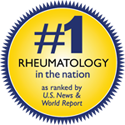Methods
Subjects with a primary or secondary discharge diagnosis of RA between January 1, 1964 and December 31, 1994 were identified from the Swedish Inpatient Register. Of these patients, those developing lymphoma within this period were identified from the Swedish Cancer Registry. Medical records were reviewed for confirmation of RA diagnosis and pathology slides were obtained and reanalyzed to verify and possibly reclassify the diagnosis of lymphoma. Pathology sections were tested for the presence of Epstein-Barr virus using RNA in-situ hybridization. Overall and cumulative RA disease activity and details of DMARD use up to the time of lymphoma diagnosis were extracted from medical records using a uniform method. RA subjects without lymphoma (controls) were matched to each RA subject with lymphoma (case) by sex, year of birth, year of first RA discharge, and county of residence.
Results
378 RA subjects with a confirmed diagnosis of lymphoma were identified. The mean duration of RA prior to lymphoma diagnosis was 20 years (range 1 59). Most lymphomas (78%) were B cell non-Hodgkins lymphomas, with the majority classified as diffuse large B-cell lymphomas (48%). EBV positivity was uncommon (12% of all lymphomas) and was found predominantly in cases with Hodgkins lymphoma.
Overall disease activity was associated with lymphoma risk, with both medium and high disease activity associated with an higher risk of lymphoma compared to low overall disease activity (OR 7.7 (95% CI 4.8 12.3) and OR 71.3 (95%CI 24.1 211.4) for medium and high disease activity, respectively, compared to low disease activity). Similar associations with lymphoma risk were found for increasing Steinbrocker functional class. Subjects in the highest quartile of mean ESR (> 45 mm/hr) and those with severe irreversible radiographic joint damage also demonstrated an increased lymphoma risk (OR 2.8 (95%CI 1.8 4.4) for ESR in the highest quartile compared to lowest quartile; OR 10.5 (95%CI 6.1 18.2) for severe radiographic joint damage in hands and feet compared with limited radiographic damage).
For cumulative disease activity, no significant association was found between disease activity and lymphoma until the 7th decile of cumulative disease activity, Thereafter, lymphoma risk rose sharply (OR 9.4 (95% CI 3.1 28.0) for the 9th decile compared to the first; OR 61.6 (95% CI 21.0 181.0) for the 10th decile compared to the first).
Seventy percent of cases and controls had received DMARDs (pre-TNF inhibitor era) mostly consisted of anti-malarial treatment, injected gold, and to a lesser extent azathioprine, methotrexate, and sulfasalazine. In addition, glucocorticoid, NSAID, and aspirin use was common. In analyses adjusted for total DMARDs used, no significant associations between therapeutic use and lymphoma were detected.
Conclusions
RA patients with the highest disease activity are the most at risk for lymphoma, primarily of the diffuse large B-cell subtype. RA therapies, including non-biologic DMARDs, glucocorticoids, NSAIDS, or aspirin do not appear to enhance lymphoma risk above that associated with disease activity. In addition, EBV associated lymphomas are uncommon in RA.
Editorial Comments
This is a very carefully designed and conducted matched case-control study. In particular, the efforts to obtain, uniformly reanalyze, and reclassify pathologic samples from 378 lymphoma patients collected over a 30 year period is an amazing feat. The association of lymphoma risk with disease activity is not surprising. However, a key and novel message from this study is the association of lymphoma with only the highest cumulative disease activity (7th decile and above). Two further issues are not quite as straightforward:
- The use of DMARDs in the cohort is quite different from those used in clinical practice currently. In particular, the numbers of methotrexate and sulfasalazine treated patients are small and may be late in the study interval (i.e. too early to see a lymphoma risk for a disease that may require decades to develop) to make a definite pronouncement on risk. In addition, none of the subjects had received leflunomide or any biologic DMARD.
- Without a non-RA comparison group, it is hard to determine the significance (or insignificance) of the 12% lymphoma EBV positivity prevalence.
Nonetheless, this rigorous work is a welcome addition to the literature and sets a new methodologic standard for case-control studies of this type.

